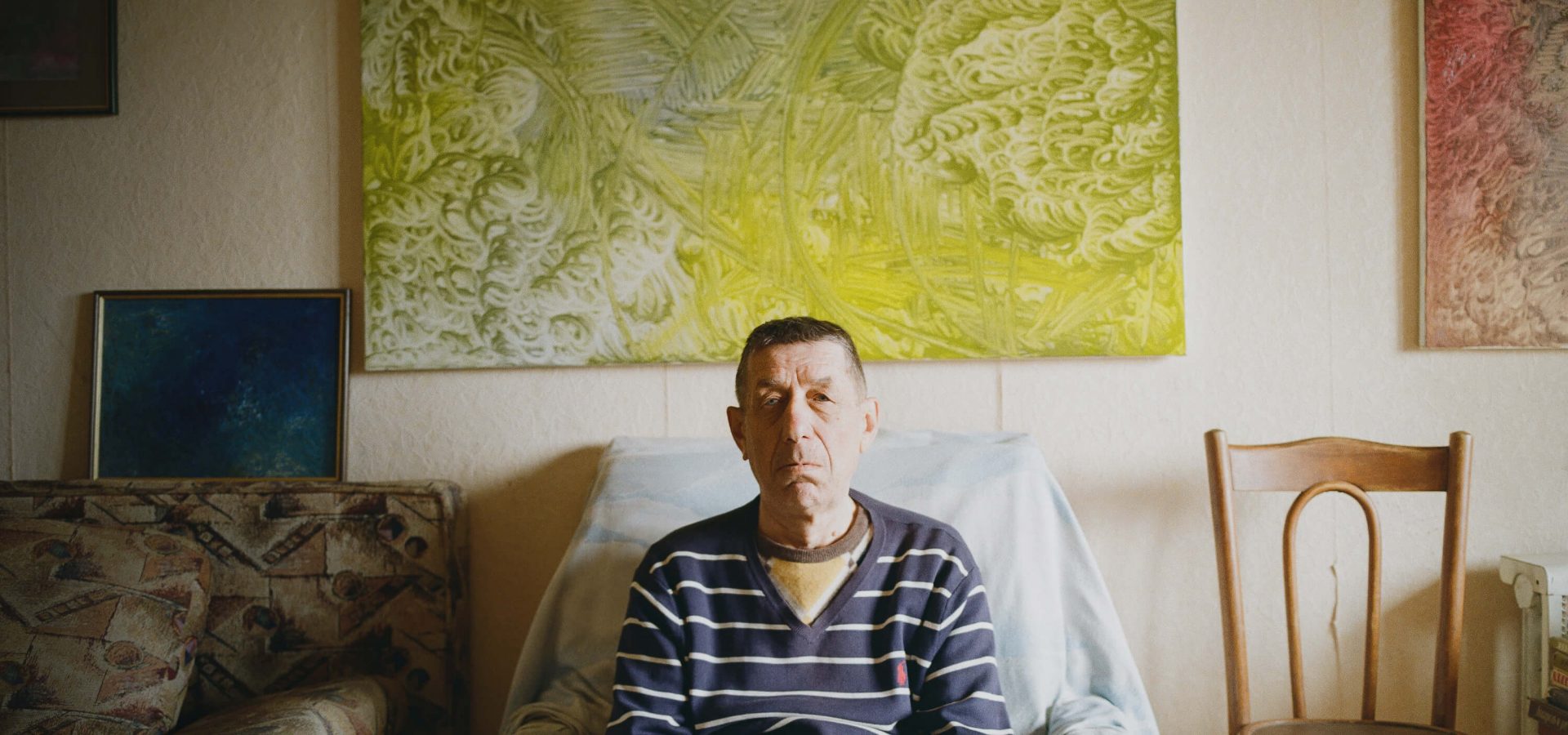
Exhibition in the Dumpster: How a Janitor Became an Artist
In the basement of the Cavalieridze Museum it’s quiet. The audience carefully examines the abstract paintings. There are few viewers, although the organizers say that there were about two hundred of them on the opening day of the exhibition. The author of the works, artist Leonid Burkovsky, stands in the corner. Not very tall, quiet, in an old sports jacket, he looks more like a provincial school labor teacher than a capital artist presenting his works.
The guests praise the author for his “good use of colors” and “depth of works.” Leonid is shy. He is not used to compliments, nor is he used to galleries. It’s not surprising. For the past fifteen years, Burkovsky has been cleaning one of the courtyards in Kyiv. He couldn’t even imagine that someday he would exhibit his paintings.
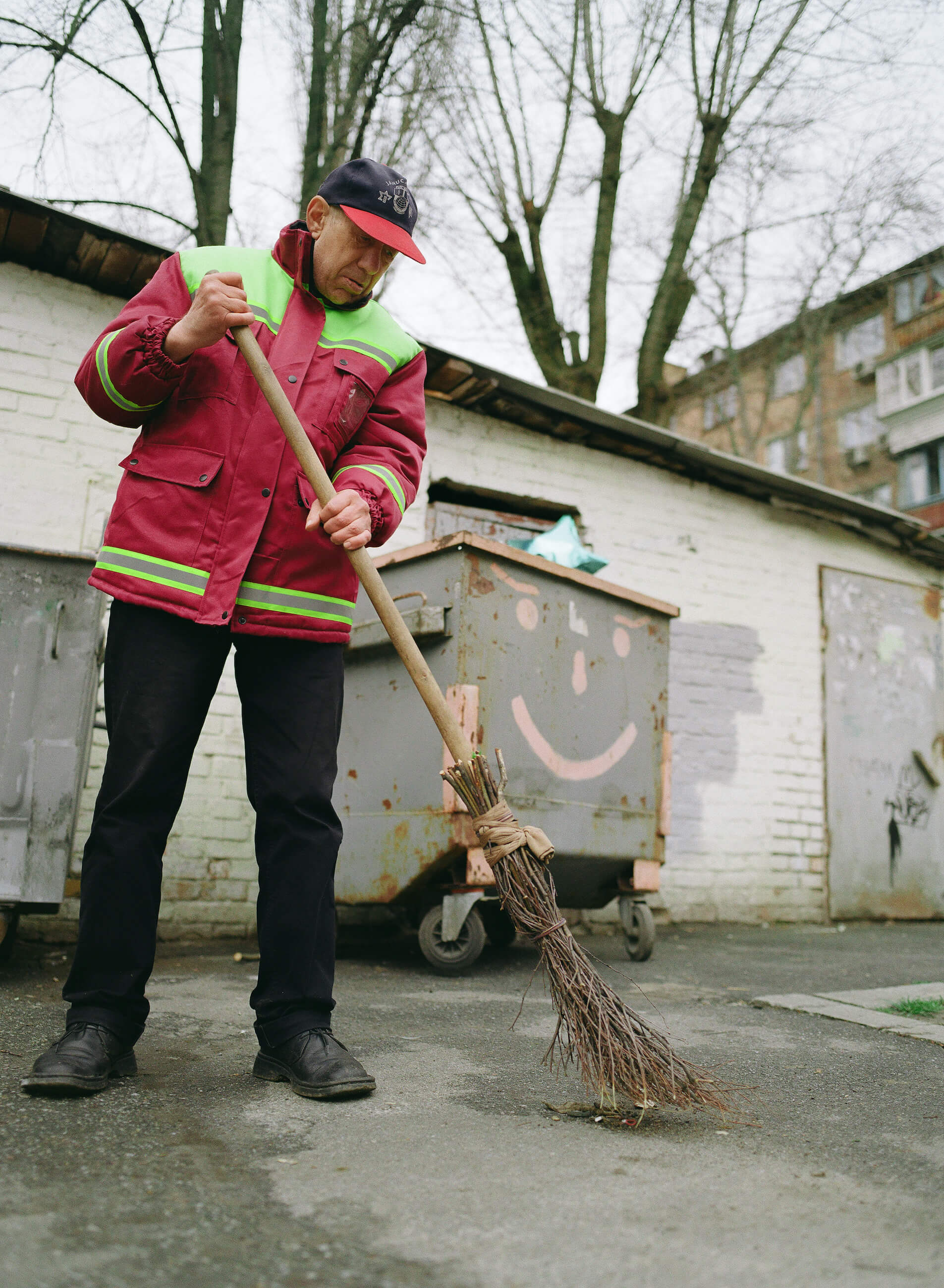
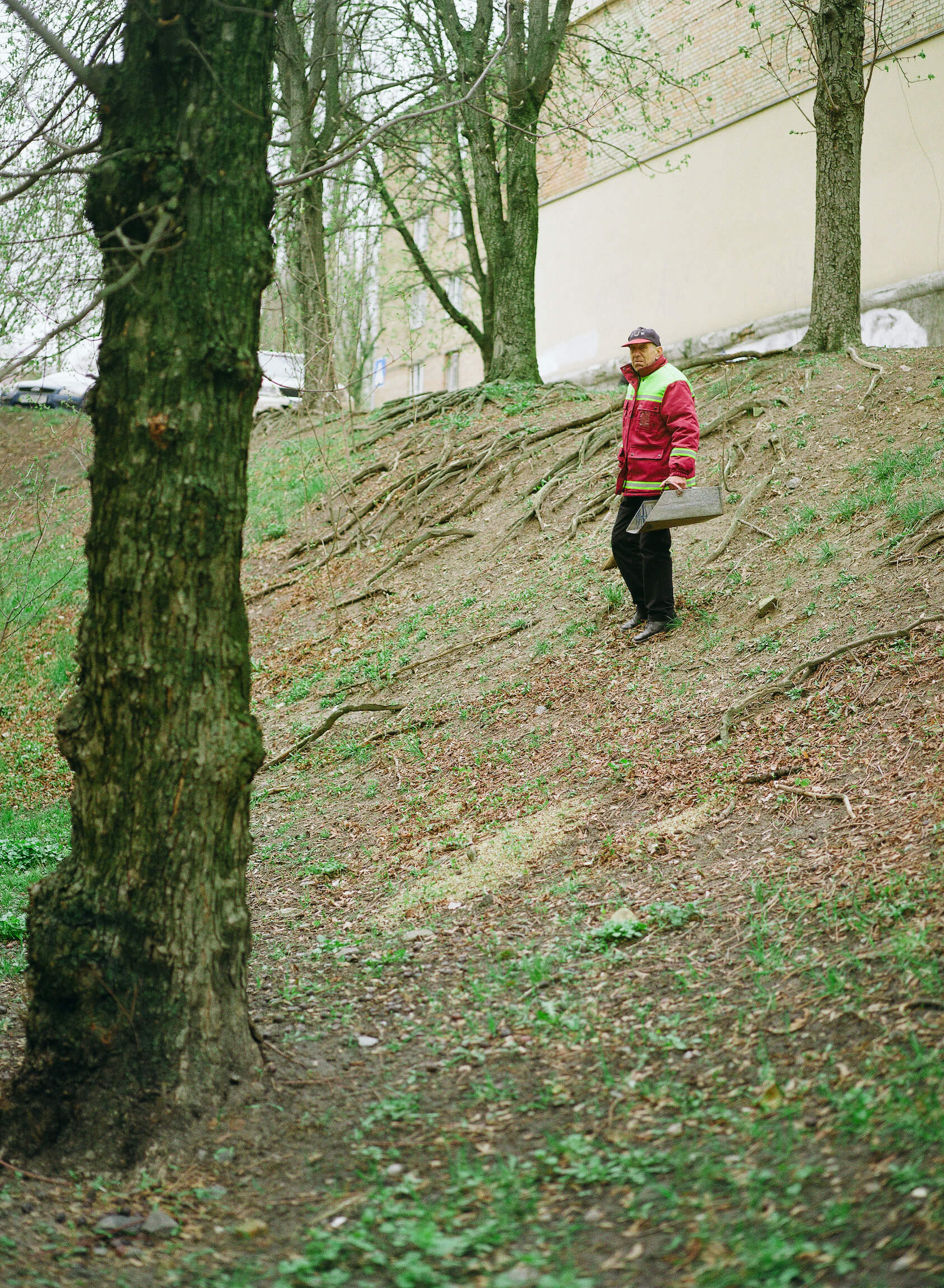
The part-time artist
The tight three-room apartment is modestly furnished: an old sofa, an armchair, windows without curtains. A working table – doors lying on bedside tables – is covered with paints and art albums. Negligently stacked piles of paintings are under the walls, on the windowsills, and in the cabinets. In total, there are about five thousand. This is the apartment of Leonid Burkovsky.
He is seventy-two. He was born and raised in Kyiv. He worked as a master at a factory, a furniture maker in the theater, and a handyman on television. After divorcing his wife, Leonid became interested in Eastern philosophy and realized that he wanted to create. In his childhood, Burkovsky tried to enter a music school but was not accepted. So before he started painting, he learned to play the bayan. Then he opened a bakery in Cherkasy, and when the business failed, he returned to Kyiv and became a janitor. He chose the job because of the convenient schedule, which he has been living by for fifteen years. In the morning, he sweeps the street, and during the day, he does what brings him pleasure – creating.
Burkovsky began painting when he was fifty-two. Like a true outsider artist, he did not learn how to paint. He doesn’t know why he started using a brush. But one day, inspired by the works of Claude Monet and Ivan Marchuk, he sat down to paint to express his vision of the world through colors.
One of the most expensive American outsider artists, Henry Darger, found material for his illustrations for his novel about children’s rebellion against adults on trash heaps. Burkovsky doesn’t know about Darger, but he did the same thing. Instead of canvas, he used the back of wall calendars, posters, and advertisements. Leonid’s ex-wife gave him oil paints, whose stepfather was also an artist, and homeless people brought watercolors, with whom Burkovsky befriended while cleaning the streets.
Instead of canvas, he used the backside of wall calendars, posters, and advertising billboards.
“Parents buy paint for their children, and when they get tired of painting, they throw it away,” the artist says. “There’s plenty of that kind of good stuff in the garbage dumps.”
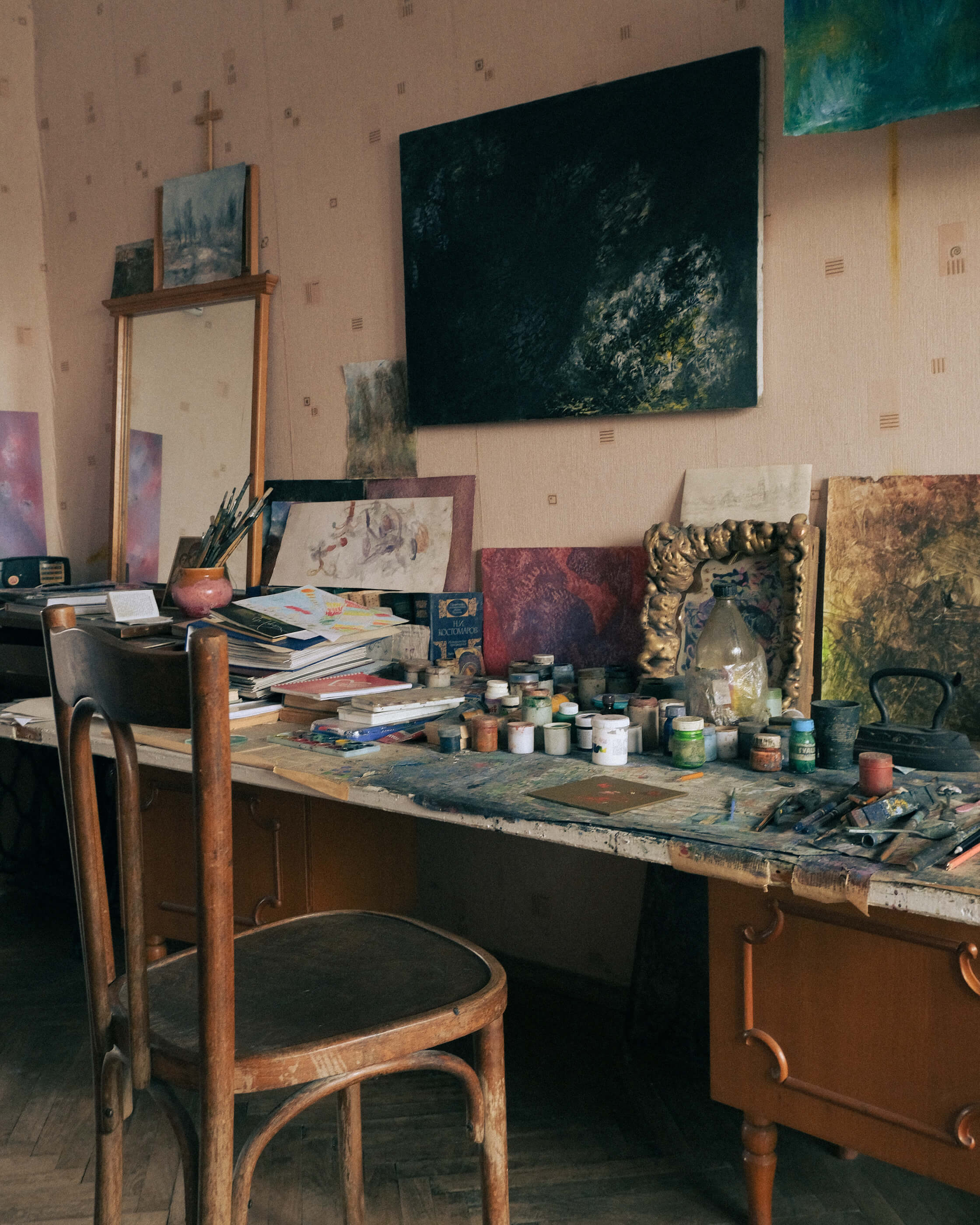
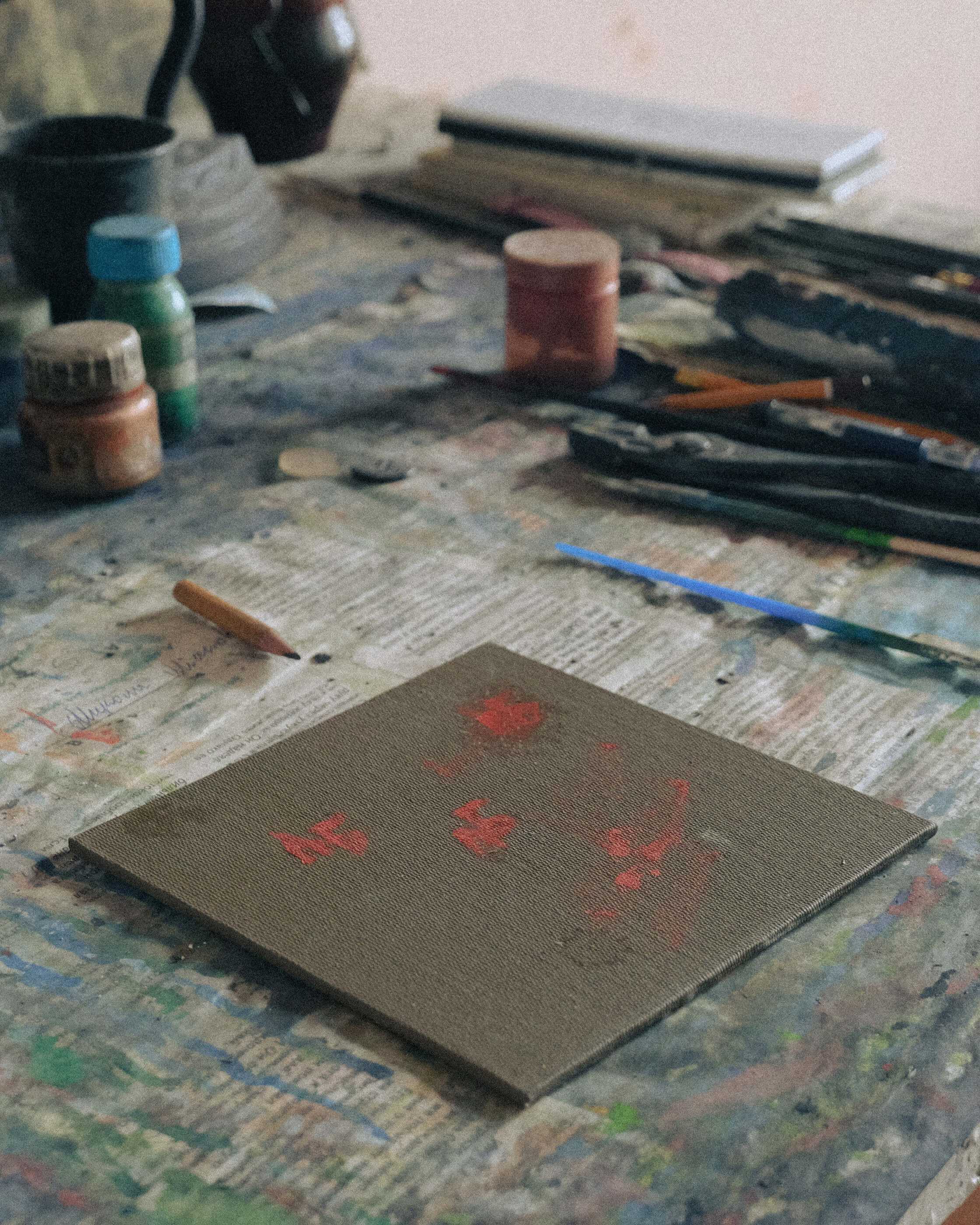
In the spotlight
Ten years ago, Leonid held his first exhibition with the support of a sponsor who paid rent for one of the galleries in Kyiv. The artist thought that everyone would soon hear about him. The exhibition ended with the sale of a painting for two hundred hryvnias (near $5). Burkovsky’s ways with the sponsor diverged, and without any means to pay for the premises, the artist decided not to exhibit anymore. But this winter he changed his mind.
To organize an exhibition of open-air works, Burkovsky was inspired by one of his favorite artists – Banksy. The weather and shelling hindered the realization of the plan for a long time. At the end of March, Burkovsky hung eight works on the janitor’s booth. He called the exhibition simply “Vernissage at the Dump”. It was supposed to last for one day, but plans quickly changed.
At the end of March, Burkovsky hung eight works on the janitor’s house. He named the exhibition “Vernissage on the Dump”.
The excitement around Burkovsky’s works began when a passerby saw them and posted a photo on the internet. The photo went viral, and the vernissage had to be extended for several days. Finally, the curator of the Museum-Workshop of I.P. Kavaleridze, Olexandra Savenok, proposed to Leonid to organize an exhibition, this time in a proper venue. The exhibition, which included about a hundred works, was put together in a week.
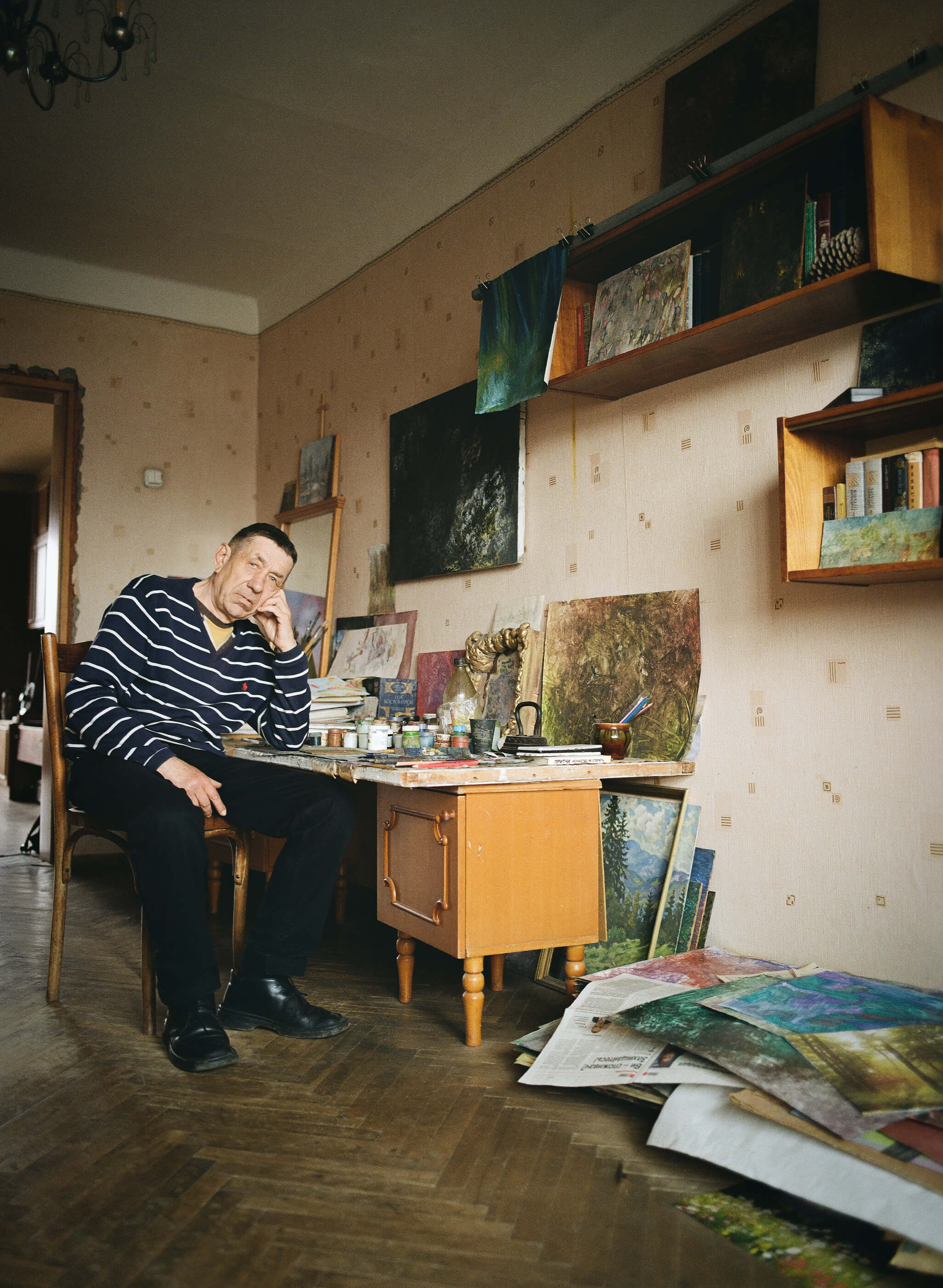
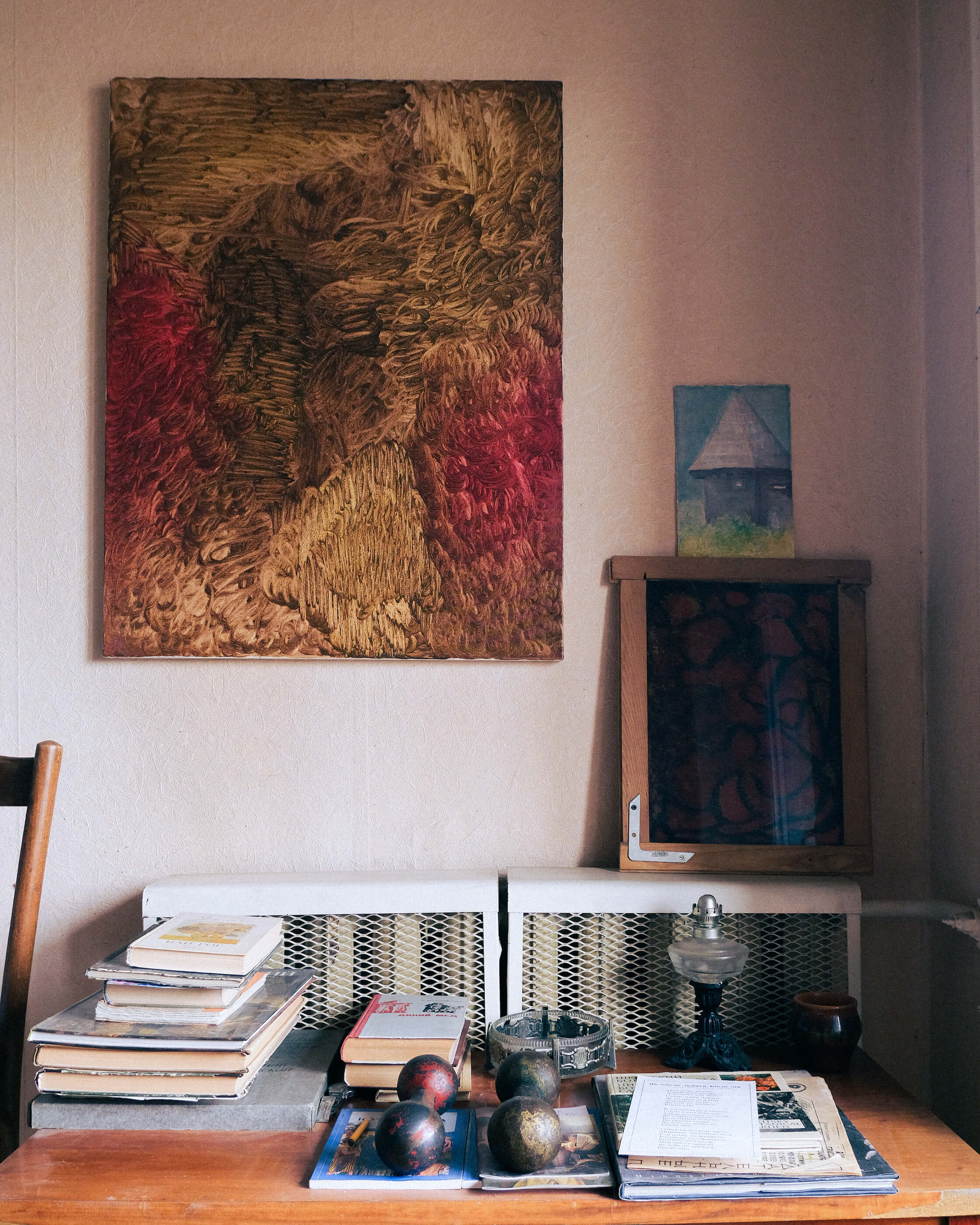
The art is not for everyone
Burkovsky’s works are unlikely to appeal to fans of narrative painting. His paintings can be divided into two types: non-narrative abstractions that convey mood, and narrative abstractions. And if the former do not raise questions among viewers, it is difficult to perceive the latter without the author’s comments.
It is difficult to understand the narrative works of Burkovsky without the author’s commentary.
The artist points to the silhouette of an elephant he painted, trying to show it to visitors for a few minutes. Not everyone sees the animal, but Burkovsky doesn’t get upset. It’s important to the artist that the viewer interprets what they see for themselves.
In the gallery, Burkovsky looks bewildered and tired. In the last week, he has given more than a dozen interviews. It’s difficult for him to speak with journalists who constantly ask about the symbolism in his paintings and his search for inspiration. Leonid doesn’t like talking about his art and isn’t very good at it.
“Sometimes, I don’t even understand what I’m saying,” he says.
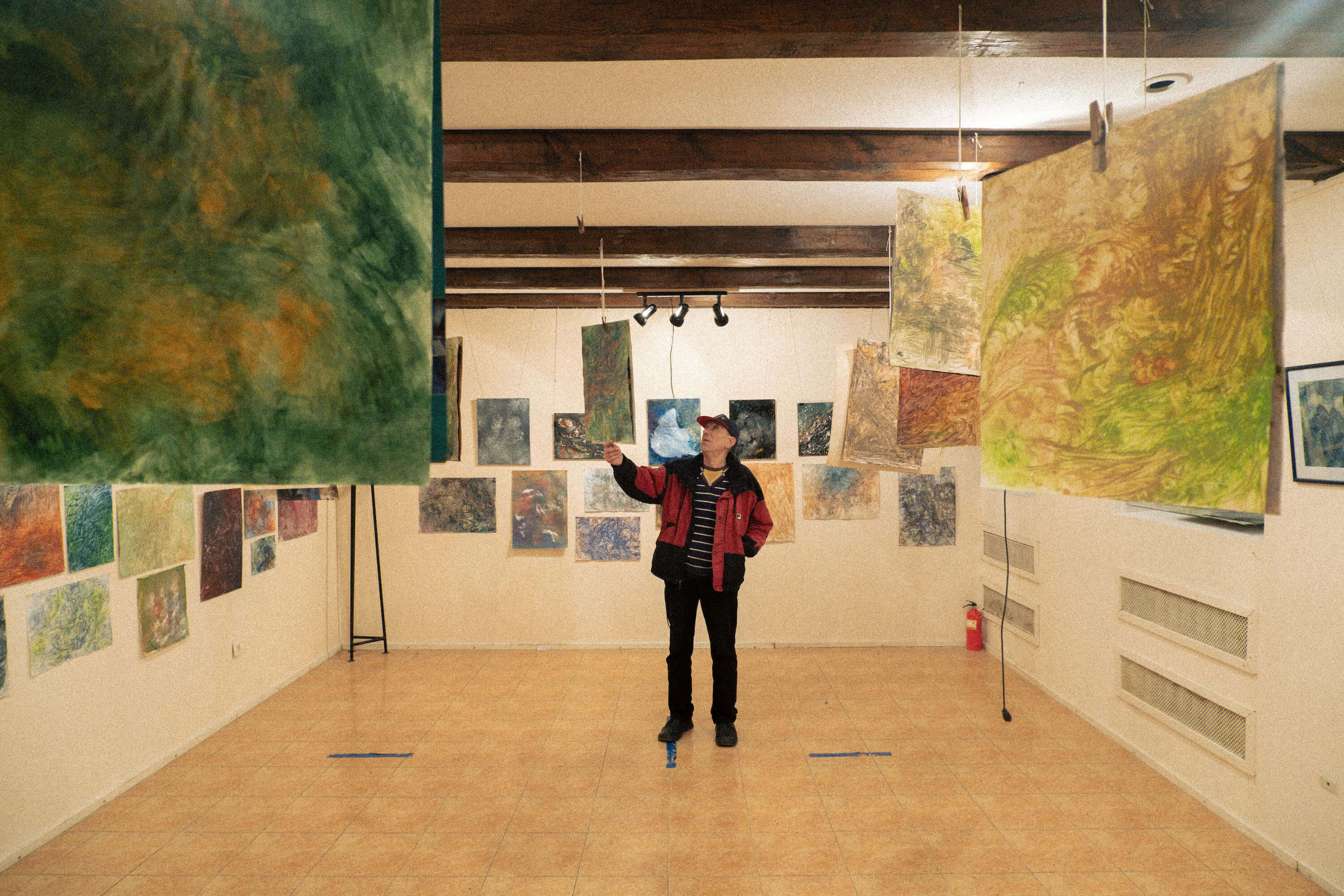
According to Burkovsky, many people are offering to buy his works today – only the museum administration has received four proposals. But the author is not planning to sell them yet: he wants to hold a few more exhibitions. After that, he is ready to consider options. Selling the works will be “expensive”, for two to three hundred dollars. He doesn’t see the point in selling them for less.
“Paintings that are sold for a pittance end up in the trash,” says the artist. “I’ve seen a lot of them there.”
Photo: Anton Orekhov, exclusively for Bird in Flight.






